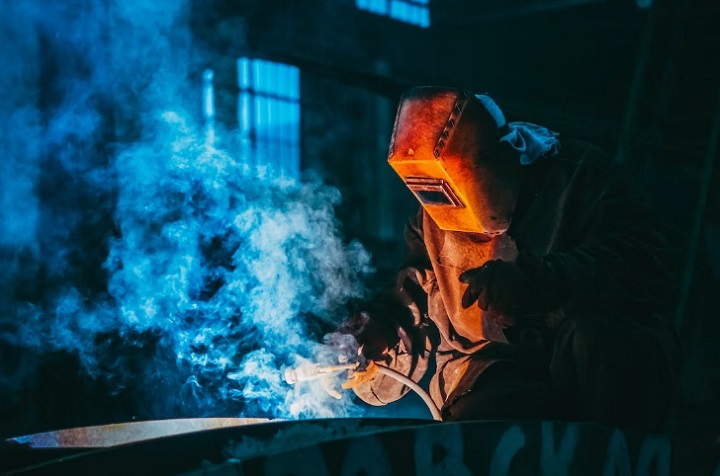Working in a factory is no cakewalk, for sure. It can be exhilarating, but in order to be a satisfying experience, people need to feel safe every second of their time there. Now, as a factory manager, you need to make sure they are safe.
This article will provide you with essential tips on how to do this.
Here is what you need to do.
Implement Monitoring Sensors
Monitoring sensors on machinery can significantly improve the safety of workers in a factory. These sensors are designed to detect and measure various parameters such as temperature, pressure, vibration and noise levels. By continuously monitoring these factors, potential hazards and risks can be identified early on, allowing for timely intervention and preventive measures.
For example, if a sensor detects an abnormal increase in temperature in a machine, it can alert the workers and supervisors to potential overheating or malfunction. This can help prevent equipment failure, fires, or other accidents that could harm workers. Similarly, sensors can monitor machine pressure levels to ensure they operate within safe limits.
If there is a sudden increase in pressure, it could indicate a leak or a potential explosion risk. By promptly detecting and addressing such issues, the safety of workers can be significantly enhanced. Vibration sensors can also play a crucial role in worker safety. Excessive vibrations in machinery can lead to equipment failure or even structural damage. By monitoring vibration levels, workers can be alerted to potential risks and take appropriate action to prevent accidents. Moreover, in the unfortunate event of an accident, it is important to consider contacting a workers compensation attorney to ensure affected workers receive essential support and compensation, reinforcing the imperative of prioritizing workplace safety.
Furthermore, noise level sensors can help protect workers from hearing damage. Prolonged exposure to high levels of noise can have long-term health effects. By monitoring noise levels and implementing measures such as ear protection or noise reduction strategies, the safety and well-being of workers can be safeguarded.
If you are intrigued by this option, you can find more info here and see if this is good enough for you.
Educate Your Workers
Ensuring the safety of factory workers is of utmost importance. Here are some effective ways to educate your factory workers regarding safety.
- Implement comprehensive safety training programs for all workers. These programs should cover topics such as hazard identification, proper use of equipment, emergency procedures and personal protective equipment (PPE) usage. Conduct regular refresher courses to reinforce safety protocols.
- Utilize visual aids such as posters, signs, and infographics to communicate safety guidelines and procedures. Place them in prominent areas throughout the factory to serve as constant reminders. Provide workers with detailed safety manuals and handbooks that outline safety protocols, procedures and best practices. Make sure these materials are easily accessible and regularly updated.
- Conduct regular toolbox talks or safety meetings to discuss specific safety topics or address any concerns raised by workers. Encourage open communication and provide a platform for workers to share their experiences and suggestions. Organize practical demonstrations to showcase the correct usage of safety equipment and techniques. This hands-on approach can help workers better understand and remember safety procedures.
- Implement a system of incentives and recognition to motivate workers to prioritize safety. Reward individuals or teams that consistently adhere to safety protocols and actively contribute to maintaining a safe working environment. Foster a culture of continuous improvement by encouraging workers to report any safety hazards or near-miss incidents. Regularly review and update safety protocols based on feedback and lessons learned.
- Collaborate with external safety organizations or experts to provide specialized training or workshops for your workers. These external resources can bring fresh perspectives and insights to enhance safety practices.
Keep The Exits Clear
In the event of a fire, natural disaster, or any other emergency, clear exits are crucial for a quick and safe evacuation. Blocked or cluttered exits can impede the escape route, leading to potential injuries or even fatalities.
Most countries have strict regulations and building codes that require clear and unobstructed exits in commercial and industrial spaces. Failure to comply with these regulations can result in penalties, legal issues, and even the closure of your factory.
Clear exits allow emergency services such as firefighters and paramedics to access the premises in case of an emergency quickly. Blocked exits can delay their response time, putting lives at risk. To ensure clear exits in your factory, follow these guidelines:
Conduct regular factory inspections to identify any potential obstructions or hazards near exits.
Install clear and visible signage indicating the location of exits throughout your factory. This helps employees and visitors easily locate the nearest exit in case of an emergency. Maintain clear pathways leading to exits by organizing equipment, materials and storage in a way that does not obstruct the exit routes. Implement proper storage systems and designate specific areas for equipment and materials.
Ensure that doors, emergency lighting, and exit signs are properly working. Regularly check and maintain these components to guarantee their functionality during emergencies.
Allow Your Workers To Take Regular Breaks
This can provide workers with an opportunity to rest and recharge. Fatigue is a major risk factor for accidents and injuries in the workplace. When workers are tired, their concentration and reaction times are impaired, increasing the likelihood of mistakes and accidents. By taking regular breaks, workers can reduce fatigue and maintain their alertness, leading to improved safety.
Also, breaks allow workers to stretch and go on splendid little walks with their buddies, thus reducing the risk of musculoskeletal injuries. Many factory jobs involve repetitive motions or prolonged periods of standing or sitting, which can strain muscles and joints. Workers can perform stretching exercises or simply change their body positions by taking short breaks. This helps to relieve stress on their bodies and reduces the risk of injuries such as strains, sprains, and back pain.
Moreover, breaks provide an opportunity for workers to address their basic needs, such as hydration and nutrition. Dehydration and hunger can negatively impact cognitive function and physical performance, increasing the risk of accidents. By allowing workers to take regular breaks, they can have access to water and food, ensuring they are adequately nourished and hydrated, which in turn promotes their safety.
These little time-outs can also serve as a mental break from the demands of the job. Factory work can be physically and mentally demanding, and prolonged periods of intense focus can lead to mental fatigue and decreased attention to safety protocols.
By taking short breaks, workers can relax and recharge their minds, improving their overall mental well-being and ability to stay focused on safety measures.





































